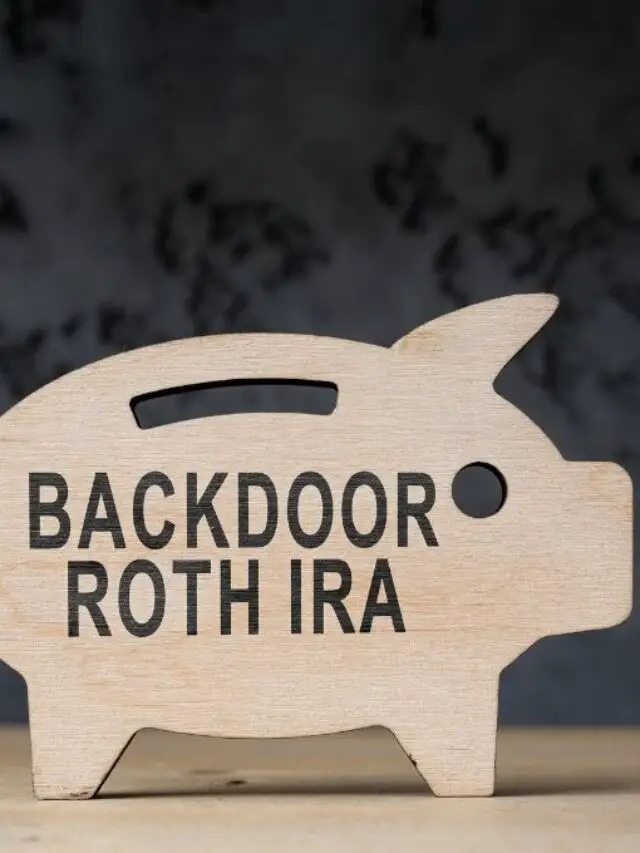Welcome, aspiring homeowners! The terrain of real estate proves as invigorating as it is complex. And if you’re delving into homeownership for the first time, the path might appear labyrinthine. This comprehensive guide aims to serve as your navigational aide, delineating your loan and program options in excruciating detail. Recognizing the multiple financing routes available not only opens doors but also empowers you to make the most sagacious choice for your circumstances.
Table of Contents
✍ Key Takeaways
- Various Loan Types: Understanding the different loans like FHA, VA, and USDA loans will offer diverse advantages and limitations.
- State Programs: Local state programs can offer invaluable benefits that are often overlooked by new buyers.
- Renovation Loans: A specialized kind of financial aid exists for those who not only want to buy but also rejuvenate an old property.
- GSEs and Other Options: Government-sponsored enterprises like Fannie Mae and Freddie Mac offer unique opportunities, but come with their complexities.
- Choosing Wisely: Your ultimate choice will significantly impact your financial future, making awareness and education vital to success.
Best First-Time Home Buyer Loans: FHA Loans
Basic Overview and Benefits
Federal Housing Administration (FHA) loans form a cornerstone for many first-time buyers. They offer certain leniencies that traditional loans just don’t. One glaring advantage? The down payment can be ridiculously low, as little as 3.5%. This indeed eases the upfront burden for those struggling to amass a substantial initial payment.
Comparing Traditional Loan and FHA Loan Down Payments
| Type of Loan | Minimum Down Payment (%) | Minimum Down Payment ($ on a $200,000 home) |
| Traditional | 20% | $40,000 |
| FHA | 3.5% | $7,000 |
Requirements and Eligibility Criteria
FHA loans are not a free-for-all; they have their set of prerequisites. A credit score of 580 or higher usually suffices for the minimum down payment. Those with a score between 500 and 579 aren’t left entirely in the lurch; they’ll just need a heftier down payment of around 10%.
Common Misconceptions
Here’s where people often stumble: they assume an FHA loan means a ticket to buying a mansion. Unfortunately, there’s a cap on how much you can borrow, which varies by region.
Tips for Successful Application
- Check Credit Score: Before initiating your application, it’s prudent to check your credit score.
- Gather Essential Documents: Make sure all required paperwork, like income proof and tax returns, are at your fingertips.
- Shop for Lenders: Don’t go with the first lender that crosses your path. Take your time.
- Consult a Financial Advisor: It never hurts to get professional advice.
Pro Tip: Always cross-verify your credit report for inaccuracies. A single mistake could set you back significantly in the loan approval process.
Best First-Time Home Buyer Loans for Veterans
What Sets VA Loans Apart
VA loans occupy an exclusive perch in the realm of real estate. Specifically tailored for veterans, active-duty service members, and select military spouses, these loans offer some striking benefits. Imagine, if you will, a mortgage landscape devoid of private mortgage insurance or an obligatory down payment. With VA loans, this utopian vision manifests into reality.
Who’s Eligible and Why It’s Worth Considering
Eligibility for a VA loan pivots on specific service requirements. Typically, you’d need to have served 181 days during peacetime, 90 days during wartime, or 6 years in the Reserves or National Guard. A spouse of a service member who died during service or from a service-connected disability could also qualify. The allure? A zero-down-payment requirement for many cases.
How VA Loans Contrast with Traditional Loans
| Metric | VA Loans | Traditional Loans |
| Down Payment | Often $0 | Typically 20% |
| Mortgage Insurance | Not Required | Usually Necessary |
| Interest Rates | Generally Lower | Market Rates |
| Credit Score Minimum | More Lenient | Stricter |
Limitations and Caveats
Despite their allure, VA loans are no panacea. For instance, they can only be used for a primary residence, not for investment properties. Additionally, there’s a “funding fee,” which fluctuates based on down payment and service type, sometimes as high as 3.6% of the loan amount.
Application Walkthrough
- Verify Your Eligibility: Acquire a Certificate of Eligibility (COE) through the VA.
- Seek Lenders: As with any loan, shop around.
- Loan Pre-Approval: A pre-approval letter gives you negotiating power.
- Home Search and Purchase Agreement: Once pre-approved, you can earnestly search for a home.
Pro Tip: Not all lenders offer the same rates for VA loans. Hence, shopping around can yield significant savings over the life of the loan.
USDA Loans
Primary Objectives and Noteworthy Advantages
Predicated upon the backing of the United States Department of Agriculture, USDA Loans unfurl as a specialized conduit for prospective homeowners who harbor an affinity for rural or suburban domiciles. What renders this financial mechanism particularly attractive? The frequent absence of an obligatory down payment and the incorporation of comparatively lenient credit prerequisites.
Geographic Parameters: The Unwritten Caveats
Be advised that USDA Loans come with geographical stipulations that merit scrutiny. Specifically, the property you seek must be strategically located within an area designated by the USDA as either rural or suburban, generally characterized by populations not exceeding 35,000 inhabitants. Therefore, those captivated by the metropolitan hum may find this option somewhat incongruous with their aspirations.
Comparative Matrix: USDA Loans Vis-a-Vis FHA and Conventional Loans
| Criteria | USDA Loans | FHA Loans | Conventional Loans |
| Down Payment | Typically Nonexistent | Minimum of 3.5% | Standard 20% |
| Mortgage Insurance | On the Lower End | Relatively Elevated | Variable |
| Geographical Constraints | Rural or Suburban Designations | None | None |
| Income Stipulations | Fixed Upper Limits | More Latitude | Relatively Unconstrained |
Protocols for an Effective Application Process
- Preliminary Eligibility Examination: Ascertain, with utmost precision, whether your target property resides in an area deemed eligible by the USDA.
- Income Verification: Ensure your financial earnings align scrupulously with the USDA’s localized income criteria.
- Credit Investigation: A FICO score that eclipses the 640 threshold substantially augments the likelihood of favorable loan consideration.
- Documentary Collation: Vigilantly amass and organize requisite financial documents, including but not limited to, income statements and federal tax returns.
Incurred Costs: An In-depth Dissection
While it’s true that USDA loans often eschew down payments, this should not engender the fallacious belief that the loan is devoid of additional fiscal obligations. There exists an upfront guarantee fee, customarily situated around 1% of the loan amount, coupled with an annual fee that tends to orbit the 0.35% mark.
Pro Tip: Utilize, to the fullest extent, the USDA’s online eligibility geographical maps. They offer a facile method for determining the eligibility of your desired property's location.
Fannie Mae and Freddie Mac
Foundational Aspects and Idiosyncrasies
Governed by intricate federal regulations, Fannie Mae and Freddie Mac function as Government-Sponsored Enterprises (GSEs). These entities were contrived to inject liquidity into the mortgage market, thus catalyzing homeownership for individuals who might otherwise find the endeavor prohibitively arduous. Their modus operandi revolves around purchasing mortgages, pooling them, and subsequently issuing mortgage-backed securities.
Distinctions: An Elucidative Comparison
Although their operational paradigms overlap to a substantial degree, divergences do exist between Fannie Mae and Freddie Mac. The former tends to focus on larger financial institutions, whereas the latter often collaborates with smaller lenders. An understanding of this dichotomy could influence your choice between the two.
Fannie Mae and Freddie Mac Explicated
| Variables | Fannie Mae | Freddie Mac |
| Target Market | Predominantly Larger Lenders | Predominantly Smaller Lenders |
| Loan Types | Broad Spectrum | Slightly Narrower Range |
| Interest Rates | Competitive | Equally Competitive |
| Loan Limits | Defined by Federal Housing Finance Agency | Similar but Not Identical Limits |
Strategic Guidance: Navigational Steps
- Lender Identification: Begin by identifying a lender that aligns with your requirements and who works with your chosen GSE.
- Financial Review: A meticulous assessment of your credit history and financial capabilities remains imperative.
- Application Initiation: Upon identifying a suitable lender, the initiation of the formal application process commences.
- Contractual Finalization: Upon approval, the final contract can be signed, sealed, and delivered.
Limitations: A Cautious Word
Even though GSEs offer competitive rates and broad loan types, they are not immune to limitations. They operate under federally set loan limits, and they don’t accommodate applicants with exceptionally low credit scores.
Pro Tip: GSE loans are often more affordable in the long run but scrutinize the particulars meticulously to ascertain that your financial state aligns with the requisites.
State-Specific First-Time Homebuyer Programs
Panoramic Overview: The Varied Tapestry
Specific to each state, myriad programs offer an eclectic variety of incentives designed to facilitate the labyrinthine process of purchasing one’s inaugural home. These range from down payment assistance to tax credits, with some states even offering special loan products. To capably navigate this heterogeneous terrain, specific awareness of your state’s particular offerings is indispensable.
Particularities: A State-by-State Account
A program flourishing in one state might be utterly absent in another. For instance, Texas features programs with down payment assistance, while Massachusetts proffers reduced interest rates for first-time buyers. Because the heterogeneity is so pronounced, specialized research tailored to your state of residence is crucial.
Comparative Delineation: Advantages Across States
| State | Down Payment Assistance | Reduced Rates | Tax Benefits |
| Texas | Yes | No | No |
| Massachusetts | No | Yes | Yes |
Navigational Considerations: A Step-By-Step Exploration
- State-Specific Research: Kick-start the process by diving deep into your state’s official housing website.
- Eligibility Criteria: Familiarize yourself with the conditions under which you might qualify.
- Consult a Local Expert: Engage a real estate agent experienced in state-specific programs.
- Application Filing: Once informed, commence the application process through designated state channels.
Potential Pitfalls: A Word to the Wise
While these programs undeniably offer tempting benefits, often they come with strings attached, such as residency requirements or the obligation to attend homebuyer education classes.
Pro Tip: Always scrutinize the fine print and consult professionals before making commitments; the devil, as they say, often resides in the details.
Home Renovation Loan Programs
Elemental Foundations: The Basics Elucidated
Home renovation loan programs serve as an amalgamation of financial resources to fund not just the acquisition of property but its subsequent refurbishment as well. Products such as the FHA 203(k) loan or the Fannie Mae HomeStyle loan constitute quintessential examples. While the allure of transforming a fixer-upper into a dream home is palpable, navigating these loan types demands both acuity and caution.
Spectrum of Choices: Your Array of Options
In the realm of home renovation loans, you’re seldom confined to a monolithic product. FHA 203(k) loans, for instance, offer a streamlined variant for minor renovations and a standard option for more ambitious projects. Then there’s the Fannie Mae HomeStyle loan, which accommodates even luxury renovations, such as installing a swimming pool.
Quantitative Metrics: Comparing Apples to Apples
| Loan Type | Maximum Amount | Renovation Scope | Down Payment |
| FHA 203(k) | $356,362 | Minor to Moderate | 3.5% |
| Fannie Mae HomeStyle | Unlimited | Broad, including luxury | 5% |
Systematic Approach: A Roadmap to Success
- Initial Research: Begin with a comprehensive examination of each loan type’s intricacies.
- Budgetary Planning: Conjure an accurate budget that encapsulates both purchase and renovation costs.
- Consult Professionals: Seek advice from contractors and mortgage advisors familiar with renovation loans.
- Submission of Application: The final step involves submitting a well-prepared application replete with pertinent documentation.
Drawbacks: A Transparent Examination
A common pitfall in this arena lies in underestimating the renovation costs, which can spiral uncontrollably. Furthermore, these loans often come bundled with higher interest rates, thus adding to the financial burden.
Pro Tip: Endeavor to procure contractor estimates before settling on a loan choice. This proactive move can sidestep the common quagmire of under-budgeting.
Other Lesser-Known Programs
Illuminating the Obscure: An Introduction to the Unfamiliar
While mainstream programs like FHA, VA, and USDA loans dominate the narrative, several lesser-known financial conduits remain overshadowed. Yet, their obscurity should not eclipse their potential value to a range of prospective homebuyers. These can include everything from Good Neighbor Next Door programs aimed at teachers and law enforcement to local community-based incentives.
Taxonomy of the Uncommon: Classifying the Diverse
- Good Neighbor Next Door: Specifically targeting educators, law enforcement officers, and emergency medical technicians, this program offers homes at half the listing price in revitalization areas.
- Energy-Efficient Mortgages (EEMs): These unique loans enable the financing of energy-efficient improvements to your house.
- Native American Direct Loan (NADL): For Veterans who are Native American or have a Native American spouse, this program offers various benefits like no down payment and no private mortgage insurance.
Comparative Anatomy: Assessing the Utility
| Program Type | Primary Benefit | Target Demographic |
| 50% off the listing price | 50% off listing price | Teachers, Law Enforcement |
| Energy-Efficient Mortgages | Energy Efficiency | General Public |
| Native American Direct Loan | No down payment, no PMI | Native American Veterans |
Pragmatic Steps: The How-To
- Initial Scouring: Begin your search by investigating federal and state housing websites.
- Eligibility Examination: Study the prerequisites for each program.
- Specialist Consultation: Converse with real estate agents who possess expertise in lesser-known programs.
- Submission of Application: Ensure your application showcases your eligibility compellingly.
Caveats and Nuances: What to Keep an Eye On
The narrow target demographics for some of these programs can make qualification tricky. Additionally, they might have limitations in terms of the property types or the areas where you can buy.
Pro Tip: For programs like the Good Neighbor Next Door, check the listings frequently as they tend to change rapidly.
Conclusion
Our sojourn through the labyrinthine realm of first-time homebuyer programs has unspooled a variegated tapestry of options, each thread woven with its own merits, limitations, and idiosyncrasies. From federal juggernauts to shadowy, lesser-known alcoves, the repertoire is dizzyingly vast.
Metamorphic Takeaways: Strategic Epiphanies for the Connoisseur
- Federal Gargantuans: FHA, VA, and USDA loans undeniably function as the bedrock for a multitude of homebuyers.
- GSE Alternatives: The twin titans, Fannie Mae and Freddie Mac, serve as auxiliary channels for potentially lucrative mortgage deals.
- Provincial Unicorns: Niche state-specific programs may offer hitherto unconsidered windfalls.
- Architectural Alchemy: Renovation loans can metamorphose fixer-uppers into dream domiciles.
- Cryptic Corridors: Our exploration into the lesser-known programs reveals clandestine avenues worthy of consideration.
Additional Resources
Your intellectual voyage need not terminate here. Websites such as the U.S. Department of Housing and Urban Development and the Consumer Financial Protection Bureau manifest as intricate repositories of knowledge. Journals, podcasts, and webinars on real estate finance offer further enlightenment.
Call to Action
Armed with this comprehensive schemata, seize the reins of your financial destiny. Consult with sage advisors, dissect labyrinthine mortgage terms, and calibrate your fiscal strategies with your existential objectives.
Frequently Asked Questions (FAQs)
- Is private mortgage insurance a ubiquitous requirement?
A misconception; for instance, VA loans lack this mandate. - Inhabiting multiple states: Can I exploit diverse state programs?
Typically, no. Most demand state residency. - Singular or dual eligibility for federal programs: Which one prevails?
Generally, one may only avail oneself of a single federal program for a singular property. - The ceiling for renovation loans: A finite sum?
Depending on the loan variant, each comes with its distinct limitations. - Tax ramifications of homebuyer programs: A fiscal Pandora’s box?
Varied; an adept tax consultant will offer the most personalized guidance. - The role of credit unions: An untapped reservoir?
They can indeed offer unique mortgage products not found elsewhere. - Adjustable-rate mortgages within these programs: A viable strategy?
Risky yet potentially rewarding, they demand careful scrutiny. - Time limitations on occupying the property: A lurking clause?
Often exists; refer to the specific terms of your loan program. - Possibility of refinancing these loans: A future option?
Feasible, but generally ensnared in a web of conditions. - Environmental considerations within loan programs: Do they exist?
Yes, particularly in Energy-Efficient Mortgages and certain state programs.
Prashant Chauhan
Author @ Finance RuffleMeet Prashant Pratap Chauhan, the savvy founder behind Finance Ruffle, a hub for sharp financial insights and expert analysis in the realm of finance blogging.




Pingback: 8 Powerful Ways Mortgage Refinancing Could Help You Pay Off Your Home Faster | Finance Ruffle
Pingback: Unlocking The Enigma Of Forgiving Student Loans: 5 Gripping Revelations | Finance Ruffle
Pingback: Personal Loans: 10 Essential Insights | Finance Ruffle
Pingback: 6 Best Insights Of What Is A USDA Loan And Your Eligibility Criteria | Finance Ruffle
Pingback: Learn About HELOC Home Equity Line Of Credit: 8 Super Insights For Newbies | Finance Ruffle
Pingback: 203k Loan: 5 Powerful Insights For Home Renovation Dreams | Finance Ruffle